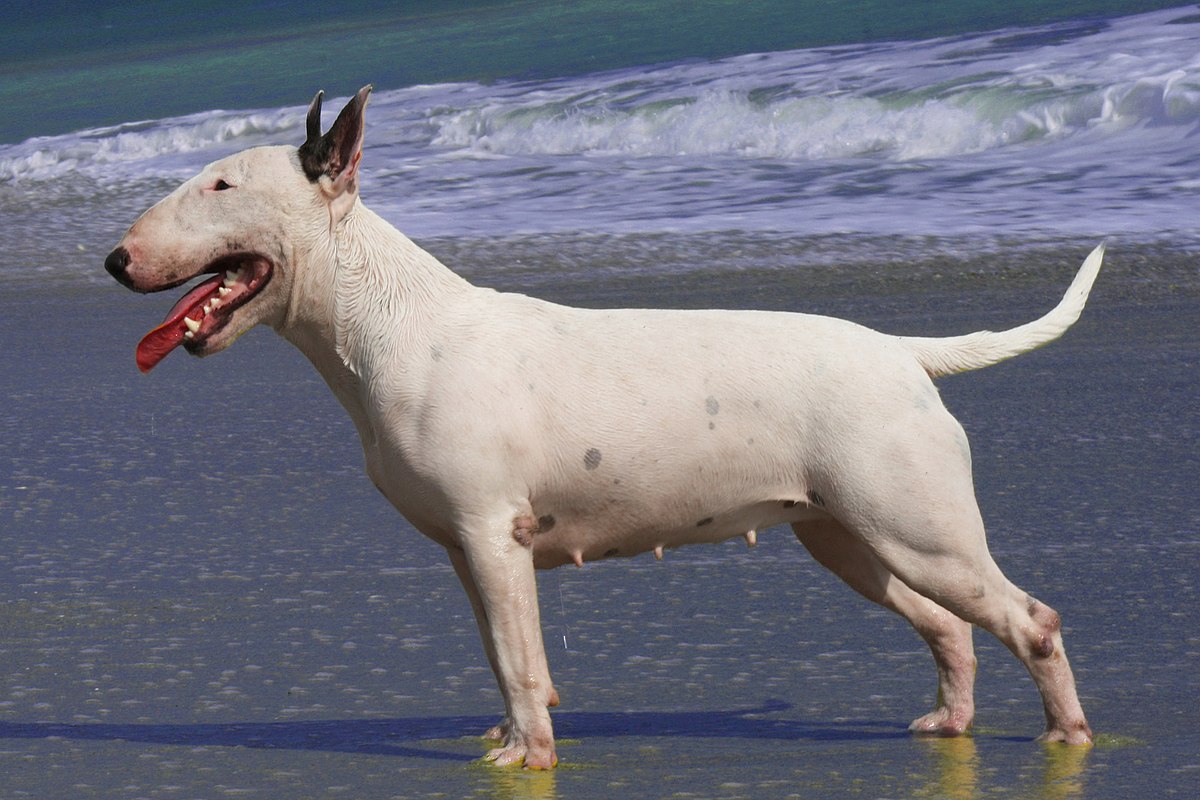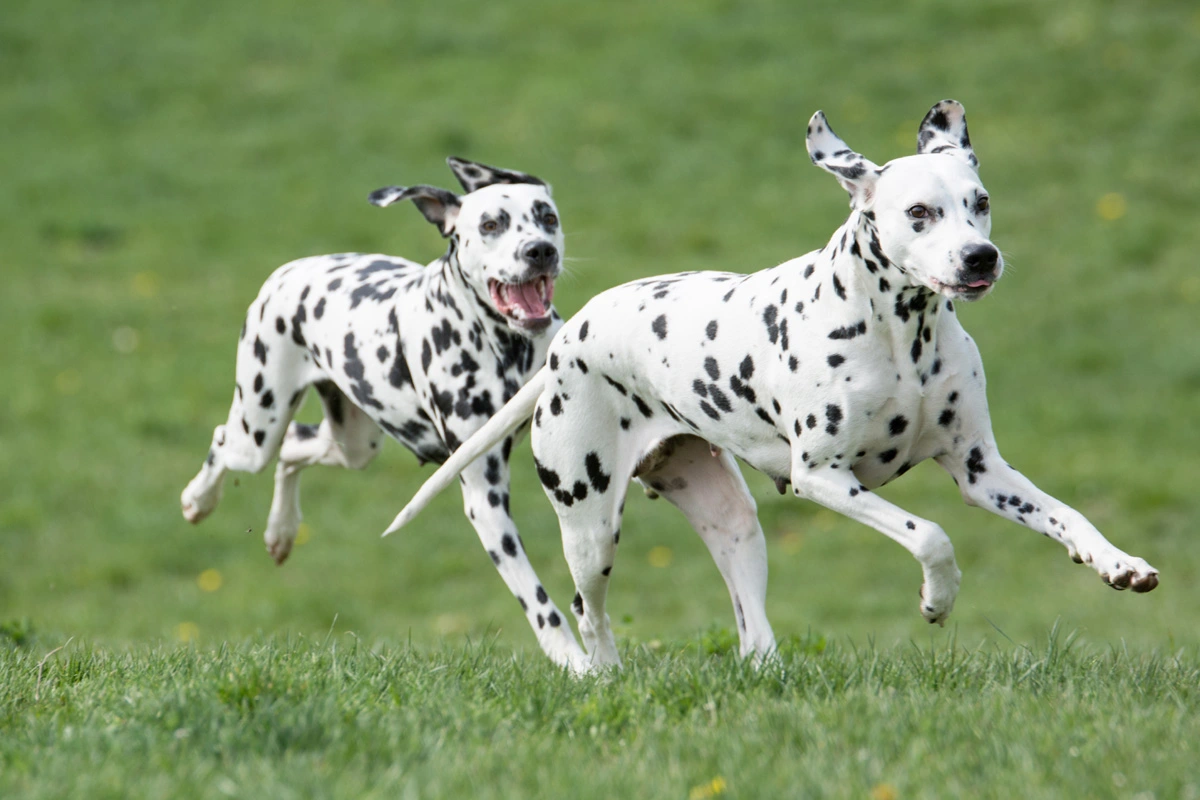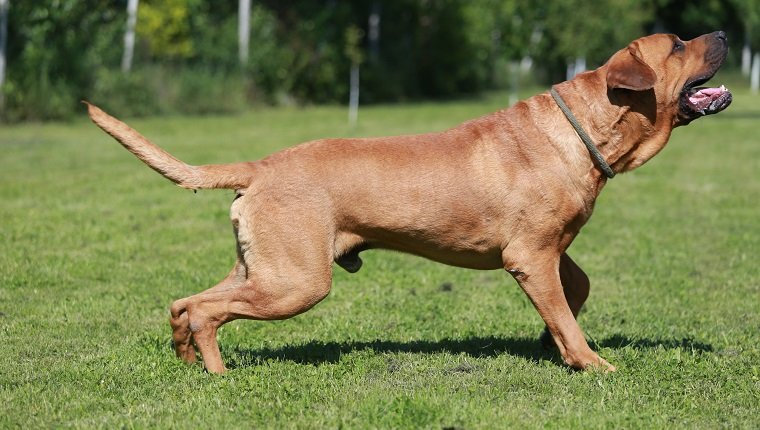Dogs may be great companions, but their bites can cause significant harm. It is estimated that over 4.5 million individuals in the United States are bitten by dogs annually, with over 20% of those victims requiring medical care. Find out which dogs are most prone to bite, and what you can do to protect yourself from being bitten.
10 DOG BREEDS WITH THE MOST BITES
In reality, any dog might potentially administer a harmful bite given the right conditions. For instance, Labrador retrievers are often thought of as family-friendly pets, yet one fatal dog bite was attributed to a Labrador in the year 2020. However, there are certain dog breeds that may be more likely to bite due to lack of training or other unfavorable situations. However, huge dogs are more often mentioned since they may cause more severe injuries.
Listed below are the top 10 canine breeds most often associated with dog attacks.
Pit Bulls

When it comes to deadly dog attacks, reports of pit bulls are among the most prevalent. Because of their reputation as a potentially dangerous dog breed, they often appear on ban lists for places like apartments and communities. Most pit bulls are raised for protection and combat, therefore they are naturally powerful and hostile. In most cases, breeding occurs in deplorable, abusive settings associated with the illegal dogfighting industry.
Aggression in dogs may have several causes, but neglect and abuse are common experiences for pit bulls. Dogs become more aggressive and more likely to bite people after experiencing trauma. However, research has revealed that the living circumstances of a pit bull significantly contribute to the dog’s aggressive behavior, dispelling the myth that these canines are inherently deadly.
People are quick to accuse pit bulls because of the breed’s reputation, even if many individual dogs belong to that breed and might be guilty for attacks. Oftentimes, individuals may incorrectly identify different dog breeds as pit bulls just because they seem similar.
The similarities between pit bulls and Staffordshire terriers, for instance, are striking. It’s easy for a person to misidentify a Staffordshire terrier assault as a pit bull attack if they just saw it once or don’t know any better. If all dogs that seem somewhat muscular are included into the “pit bull” category, the true incidence of dog bites may be underreported.
Because of their strength, pit bulls may be very dangerous when they attack. The likelihood of your dog biting another animal or person depends on your actions and how seriously you take training him or her.
Rottweilers

To put it simply, Rottweilers are big, strong dogs with a nasty bite. Rottweilers were initially developed to herd cattle and other animals, but they now find more common employment as security dogs and search and rescue canines. Their protective nature often makes them violent. Rottweilers, like many other dog breeds, benefit greatly from regular exercise, mental stimulation, and socialization; without these things, the dog’s temperament may easily spiral out of control.
Rottweilers have a strong desire to serve their owners, thus they need consistent training and mental stimulation to maintain good behavior. They may be wonderful companions because of their loyalty and protective nature; but, understanding the danger posed by their ability to bite is essential to safeguard yourself, your dog, and others.
German Shepherds

The attractiveness, protective nature, and eagerness to work of German shepherds make them a popular breed. Because of their ability to be aggressive in self-defense, German shepherds are often used by law enforcement and armed forces.
Unfortunately, a German shepherd’s natural protectiveness may easily lead to outright hostility if the dog has not been properly socialized and trained. However, the same qualities that make them such good guard dogs can pose serious threats in certain circumstances. Although being hostile and confrontational to strangers might be useful in some circumstances, it can make bringing new friends over a bit of a risk.
While their aggressive nature is useful for law enforcement, it is not in the household. Due to their high intelligence, German shepherds may be trained to control their aggressive inclinations.
Chihuahuas

A huge dog’s bite may cause serious injury or even death, so it’s natural to picture a massive breed when this topic is brought up. Smaller dogs, like Chihuahuas, are less likely to be taken seriously as potential threats of dog bite attacks. But Chihuahuas are often included in lists of the most violent dog breeds. Their bite may not inflict as much harm as that of a bigger breed, but it will still hurt.
Growling, barking, nipping, and biting are common behaviors shown by Chihuahuas toward humans of all ages. Their diminutive size belies their ability to strike dread in the hearts of young and old alike.
Bully Breeds
Bully breeds are bulldog-type breeds, including:
- American bulldogs
- Bull terriers
- English bulldogs
- Boxers
- Cane Corso
- Mastiffs
These breeds have the potential to be gentle, yet their bites may be very painful if they get irritated. There is no telling when a bulldog may decide to become violent; a calm and friendly pet can become vicious in the blink of an eye. Although some of the breeds included here are smaller than average, all of them have a tendency to be highly muscular and are capable of causing major damage.
Terrier

Terriers, another feisty species of little dogs, bite because they were originally developed to chase rodents. Terriers have a propensity to resort to biting when they get irritated, which is often. Terriers are easily provoked, and children are a common target of their bites.
This breed is known for its aggressive nature and may deliver a nasty bite if provoked. A terrier bite, like those of other tiny breeds, is not likely to be lethal, but it may cause anxiety in children and make them unattractive companions.
Dalmatians

Just like many of the other dogs on this list, Dalmatians may be wonderful friends but can also become violent if given the chance. They were developed to protect traveling carriages and riders from robbers and other dangers. Their natural tendency to defend and preserve their territory may lead to aggressive behavior, including biting. Furthermore, stubbornness and aggression may be passed on to offspring through bad mating practices with this breed.
Early training and socialization are crucial for Dalmatians. There have been reports of this breed snapping at humans and chewing up furniture if they don’t get enough exercise or socializing.
Cocker Spaniels

Some of the other dogs on our list, like the golden retriever, may seem like no-brainers, but the cocker spaniel could surprise you. In part because of its endearing appearance and gentle demeanor, this breed is often chosen as a family pet. Nevertheless, when cocker spaniels feel frightened or angry, they may bite or even attack their human companions. They share a trait with other toy dog breeds: they tend to lose their cool quickly, therefore they may not be the greatest choice for a family with young children.
Tosa Inu

As a huge dog breed, Tosa Inus are known for their devastating bite. Their biting force of 556 lb. per sq. in. places them in the top five strongest bites in the world (PSI). The Tosa Inu is a hybrid dog that was created when breeders in Japan crossed many distinct types of European dogs together. The breeders’ intention was to create a canine that could not be defeated in a battle. Due of their history of deadly dog attacks, several nations have banned these breeds, however the United States is not one of them.
The Tosa Inu’s intimidating stature and painful bite have earned it a reputation as a dog to be dreaded. However, they may be taught to be sociable with the right guidance.
Dobermans

Dobermans are a popular breed because they’re intelligent, strong and adaptive. They’re very loyal and protective, making them another popular choice for defense and police dogs. These muscular dogs are sure to scare off intruders, though their protective instincts can cause problems. A Doberman has a powerful bite of about 245 PSI, though they’re capable of being trained to be gentle with people.
Bite Prevention Strategies
Many of the breeds mentioned above may be well-mannered with the correct care and training. Many well-mannered and placid dogs may be found among these breeds.
Dogs are very much a product of their environment, and although certain breeds may have a predisposition for violent behavior, this is not always the case. Aggression in dogs, regardless of breed, is often the result of poor treatment, inadequate socialization, or fear.
You should know how to avoid a dog bite whether you own or are contemplating obtaining a dog of any breed, including those on the list. You may do this by being a conscientious dog owner and investing time and energy into training, socializing, and comprehending your dog’s behavior.
Taking Care of Your Pet Properly
Dog personalities reflect their upbringing. As a dog owner, or someone considering getting a dog, you should know that your dog’s behavior with you, children, and other animals will be shaped in large part by how you treat your dog. A dog’s reaction to inadequate treatment is similar to that of a human being: you can’t expect respect if you don’t provide it.
Providing a comfortable environment for your dog is just part of being a responsible pet owner. Also, if you’re a dog owner, you need to know that
Take into account your home and family dynamics while selecting a breed of dog.
Allowing the dog a sufficient amount of time for exercise is crucial.
The importance of keeping an eye on your dog among other creatures and humans
Consider the many factors, such as social interactions and emotional states, that might increase the likelihood of a dog bite accident, and take steps to avoid them. It’s common to post signs along the sidewalk asking passersby to refrain from petting your dog if they’re strangers.
Education That Sticks
Initiate your dog’s training immediately. Dogs might be less prone to have behavioral issues as adults if they are taught good manners as puppies. Training your puppy as soon as possible can help you establish a strong bond with it and increase the likelihood that it will follow your lead.
Training that works best uses prizes to reinforce desired behaviors rather than penalties to curb undesirable ones. Consistency in training is also important since it reinforces desirable behavior and prevents it from becoming stale in the eyes of the trainees. You may find resources for training your dog online or enroll in a class in your area.
Appropriate socialization
Your puppy will benefit greatly from being exposed to new people, other animals, and other environments throughout its formative months. Dogs that have been properly socialized are less likely to bite out of stress or fear than those that have not been. It’s ideal to introduce your dog to new people and environments as early as possible so that they may adjust at their own speed.
If you want your dog to have a good time, you should do all you can to keep it out of stressful circumstances. One might have greater confidence taking their dog out in public or having them among other people if the dog has been properly socialized. Inappropriately socialized canines pose a threat to both you and the public.
Recognizing Aggressive Attitudes and Actions
When dogs act aggressively, it is easy for it to be misunderstood or dismissed as rough play. Knowing the signs of aggression might help you prevent injuries from bites. The following are three manifestations of canine aggressiveness that you should be aware of:
- Male canines who have not been neutered may exhibit dominating aggressive behavior. This may manifest in a variety of ways, such as mounting other dogs or humans, lunging at them, breaking down doors, obstructing people’s paths, making low barking and snarling noises, or just looking at them.
- There is a correlation between a dog’s level of fear and its propensity to bite in self-defense or to defend others. When your dog is feeling anxious or worried, they may exhibit subservient body language.
- If your dog pins its ears back, lowers its head and body, tucks its tail between its legs, avoids eye contact, or urinates on the floor, it may be feeling threatened and you should not approach it or allow others to do so.
- When dogs have to fight with one another over territory, food, toys, or humans, they are more likely to develop possessive aggressiveness. Rescue dogs, or dogs exposed to a new opponent, often exhibit this form of hostility. Your dog’s possessive hostility might manifest as snarling if another dog approaches its food bowl.
Knowing the indicators of aggressive behavior will help you determine whether your dog is a threat to you or others. Instead of scolding your dog, try calming and comforting it when it acts aggressively. The best way to prevent your dog from being aggressive is to avoid the circumstances that bring it out.
GET LIABILITY COVERAGE FOR YOUR PET TO PROTECT YOU AND YOUR FAMILY
Although the aforementioned breeds are more prone to bite, any dog, given the correct conditions, is capable of violence. If your dog ever causes harm to a person or animal, or causes damage to someone else’s property, you can rest easy knowing that XINSURANCE offers pet liability insurance. If your pet causes harm to another person or their property, you may be held legally responsible for the costs of any necessary repairs or medical care. Pet insurance may assist alleviate some of these costs. XINSURANCE may help you locate protection if your dog is of a hazardous breed or has a higher propensity to bite.